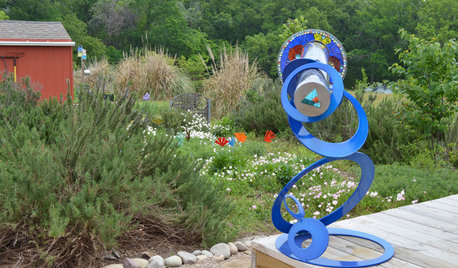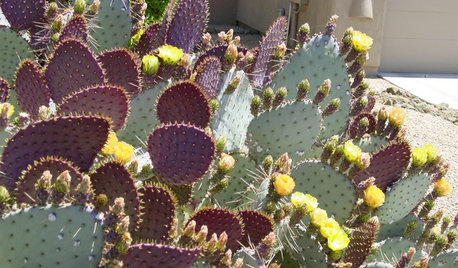Propagation biology
thecityman, Zone 7a/6b near Nashville
10 years ago
Related Stories

GARDENING GUIDESWe Bust 4 More Native Plant Myths
Have you been taken in by these fallacies about gardening with native plants?
Full Story
GREEN BUILDINGBuilding Green: How to Design a Healthier Landscape
Plant selection, water management, fire-prevention measures and more can ensure that your landscape is good for the planet and for you
Full Story
HOUZZ TOURSMy Houzz: A Handcrafted Bohemian Homestead in Texas
Overflowing with art and intertwined with gardens, this pieced-together home is a marvel of creativity
Full Story
FLOWERSRudbeckia Mania: Go Beyond Black-Eyed Susan in the Garden
Branch out from typical nursery fare, with lesser-known Rudbeckia species that have delightfully unexpected features
Full Story
GARDENING GUIDES6 Plants That Beat Butterfly Bush for the Wildlife Draw
It's invasive, a nonnative and a poor insect magnet. Check out these better alternatives to butterfly bush in the garden
Full Story
GARDENING GUIDESGreat Design Plant: Santa Rita Prickly Pear for Purple Appeal
Distinctive colored pads and yellow flowers make this cactus a favorite in Southwestern gardens
Full StoryMore Discussions







Konrad___far_north
plumfan
Related Professionals
Norfolk Landscape Architects & Landscape Designers · Arnold Landscape Architects & Landscape Designers · Lake Oswego Landscape Architects & Landscape Designers · Leawood Landscape Architects & Landscape Designers · Saint Matthews Landscape Architects & Landscape Designers · Towson Landscape Architects & Landscape Designers · Buford Landscape Contractors · Beachwood Landscape Contractors · El Reno Landscape Contractors · Florham Park Landscape Contractors · Leicester Landscape Contractors · Salmon Creek Landscape Contractors · San Pedro Landscape Contractors · Setauket-East Setauket Landscape Contractors · North Aurora Landscape Contractorstringblat
thecityman, Zone 7a/6b near NashvilleOriginal Author
Konrad___far_north
thecityman, Zone 7a/6b near NashvilleOriginal Author
olpea
thecityman, Zone 7a/6b near NashvilleOriginal Author
drew51 SE MI Z5b/6a
Konrad___far_north
thecityman, Zone 7a/6b near NashvilleOriginal Author
olpea
thecityman, Zone 7a/6b near NashvilleOriginal Author
Konrad___far_north
marknmt